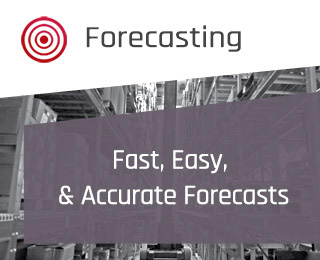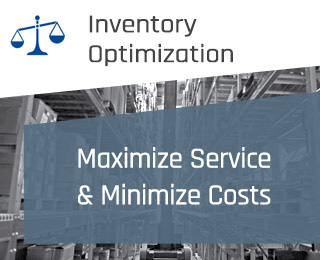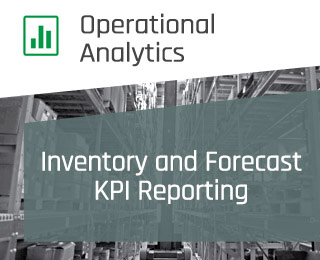Transforming Supply Chain Efficiency
In a highly competitive market characterized by enterprises’ persistent pursuit of increased profit margins, cost reduction, and the delivery of great customer experiences, disruptive technologies such as Machine Learning (ML) and Artificial Intelligence (AI) bring important opportunities.
The main objective of using AI and Machine Learning in the supply chain is to increase efficiency and productivity. First, incorporating machine learning into supply chain management can help automate a number of repetitive tasks, allowing businesses to concentrate on more strategic and consequential business activities., AI-based systems can improve the entire supply chain process. Additionally, they can minimize inefficiencies through intelligent automation and offer visibility and insights that facilitate good planning and decision-making.
AI and Machine Learning have the potential to have a transformational impact in a number of crucial areas, including demand forecasting and Inventory Optimization.
AI & ML Transformation in Forecasting and Inventory Optimization
The integration of new Artificial Intelligence (AI) and Machine Learning (ML) technologies brings transformative benefits to the fields of statistical forecasting and inventory optimization:
Enhanced Accuracy
AI and ML algorithms can analyze complex data sets with remarkable accuracy, leading to more precise demand forecasts. These technologies can identify intricate patterns and factors that traditional statistical methods might miss, improving the accuracy of forecasts and optimizing inventory levels accordingly.
Data Integration and Insights
AI and ML can process and analyze large volumes of data from multiple sources, integrating information from diverse channels. This comprehensive analysis provides deeper insights into customer behavior, external factors, and market dynamics, leading to more accurate forecasts and optimized inventory strategies.
Automation and Efficiency
AI and ML technologies automate much of the forecasting and optimization process. This not only saves time and reduces manual labor but also allows for quicker responses to changes in demand or supply. Automation enables businesses to be more responsive and agile in their decision-making.
Reduced Bullwhip Effect
AI and ML can help mitigate the bullwhip effect, which is the amplified demand variability observed as one moves up the supply chain. By improving forecast accuracy and optimizing inventory across the chain, these technologies reduce fluctuations and enhance supply chain stability.
In essence, the integration of AI and ML technologies into statistical forecasting and inventory optimization brings unprecedented accuracy, adaptability, automation, and insights to these fields, ultimately leading to more efficient and responsive supply chain management.
Smart Software’s Advanced Machine Learning
Smart Software has built-in machine learning algorithms that can detect significant changes in the character of an item’s demand. Smart Software’s Machine Learning models mass-customize the decision of which historical data to use, yielding more accurate forecasts for all items.
Smart Software enhances forecasting precision by incorporating daily demand and supply signals, pushing the boundaries of traditional probabilistic forecasting methods. This advancement leads to more accurate estimations of mean demand and a more realistic assessment of forecast uncertainty. By accounting for different timeframes and seasonality patterns, the resulting forecasts are more refined and better aligned with the actual demand patterns.
In response to the rapidly changing business landscape, where operations are conducted at an accelerated pace and demand patterns have grown intermittent due to the proliferation of SKU variations, Smart Software adapts by basing its calculations on daily data. This approach allows for the simulation of daily demands over future periods, facilitating proactive adjustments to reorder levels or expediting processes. This heightened responsiveness enables course corrections much earlier than conventional methods, culminating in optimized inventory levels.
Recognizing the potential for demand patterns to undergo significant shifts that older observations may overlook Smart Software employs machine learning algorithms for automated regime change detection. By identifying and excluding data from obsolete economic regimes, this method mitigates biases in forecasts and ensures that only pertinent data contributes to each item’s demand evaluation.
Smart Software distinguishes itself by adopting a customized approach to historical data utilization, moving away from a generic strategy. Through its machine learning models, it adeptly determines the most relevant historical data for each specific item. This personalized methodology significantly enhances forecast accuracy, as it considers the distinct demand traits of each product. In synergy, Smart Software’s comprehensive methodology, encompassing daily data integration, adaptive forecasting techniques, regime change detection, and bespoke historical data application, harmonizes to optimize inventory management. This synthesis culminates in a supply chain that reaps the rewards of forecasts that not only excel in precision and responsiveness but are also attuned to the ever-changing dynamics of demand fluctuations.
White Paper: Smart Software Gen2
In this white paper, we introduce “Gen2”, our next generation of probabilistic modeling technology that powers the Smart IP&O Platform. We recount the evolution of Smart Software’s forecasting methods and we detail how Gen2 substantially expands the capabilities that have made Gen1 so useful to so many companies. Finally, we will also give a high-level view of the probability math behind Gen2 . Fill in this form and we'll email you the paper.
Contact Us Today for More Information
If you request a demo, one of our specialists will show you how Smart can help, using your own inventory data!












